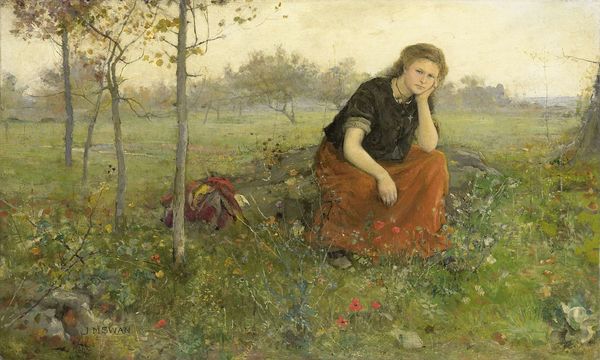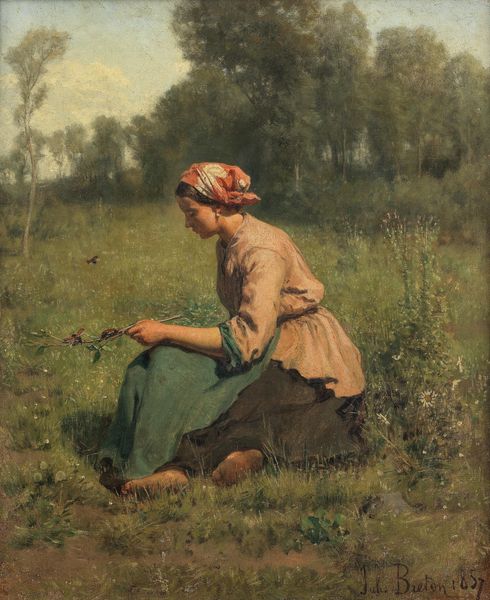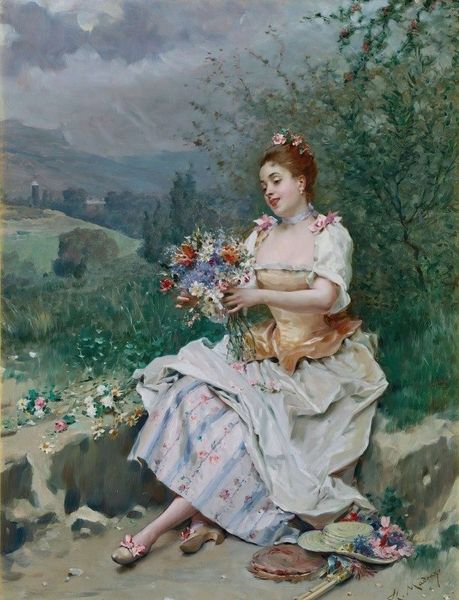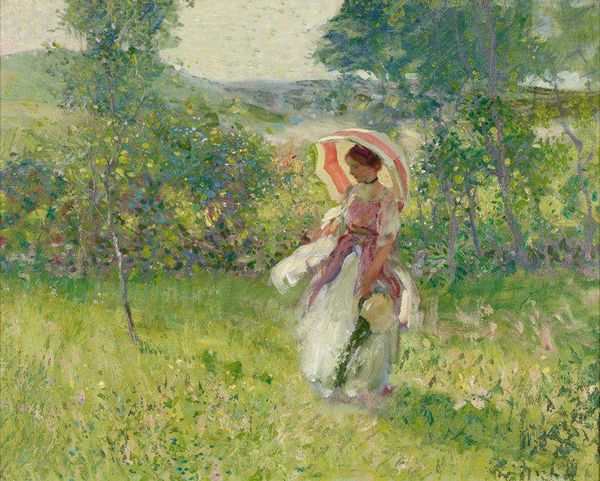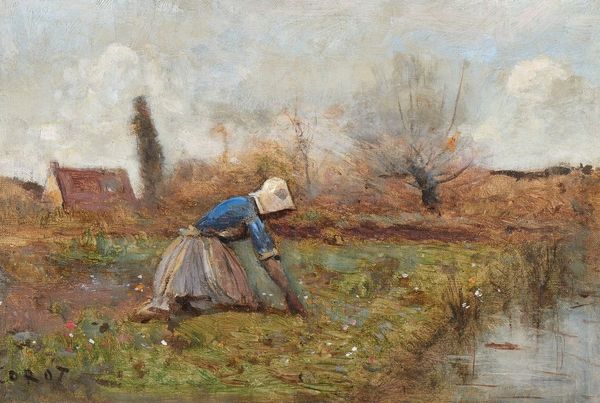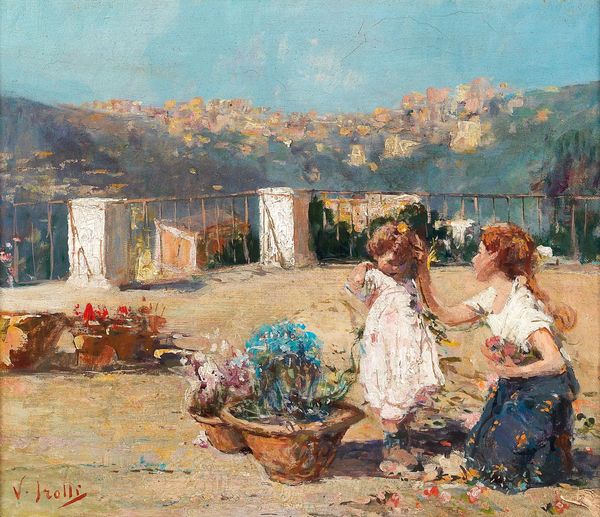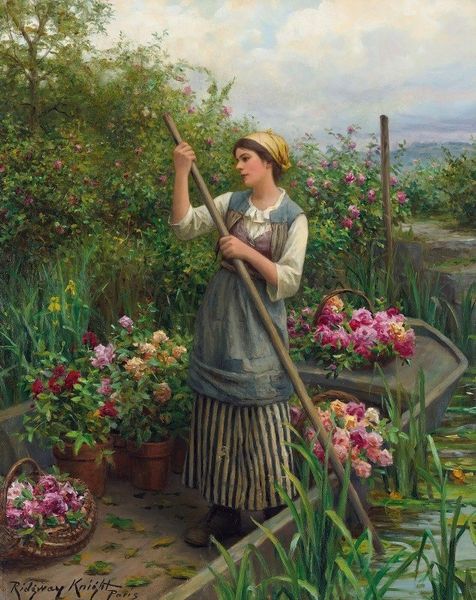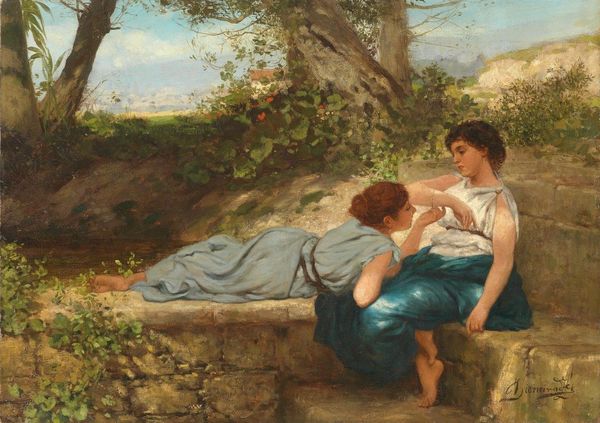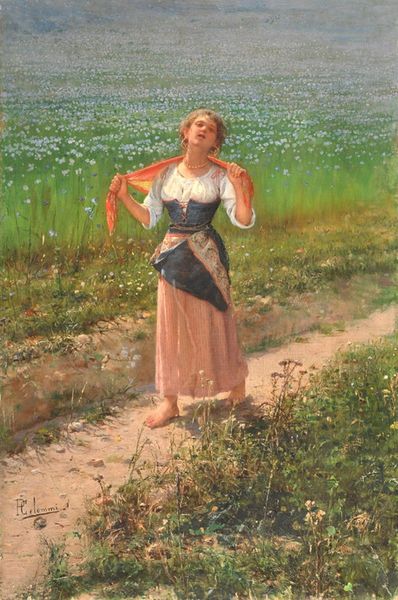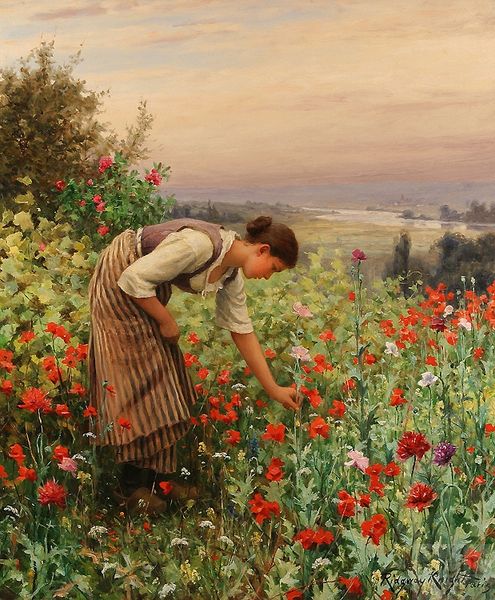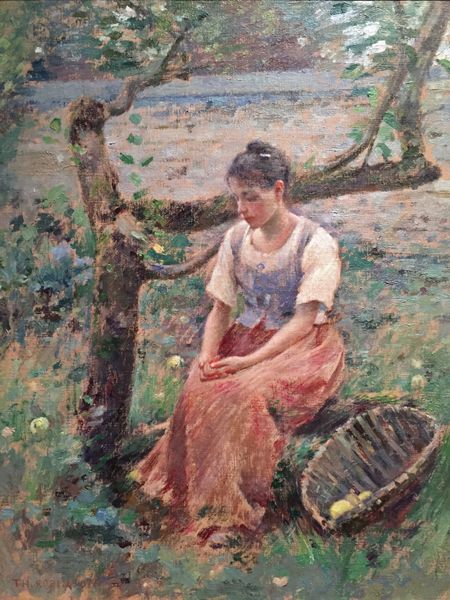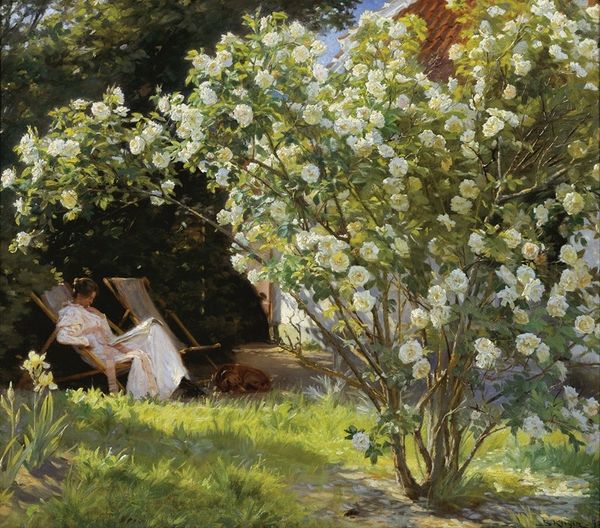
Copyright: Public Domain: Artvee
Editor: Julius Leblanc Stewart’s “The First Spring,” created in 1890 with oil paint, depicts a woman gathering flowers in a sun-drenched field. It’s quite luminous, capturing this idyllic scene. How would you interpret the symbolic elements in this piece? Curator: It's tempting to view this simply as a pleasant Impressionistic landscape. But notice how Stewart places the woman almost *in* the earth, at one with the burgeoning flora. The flowers she gathers become an extension of herself. Spring itself isn't just a season; it's a recurring symbol of renewal, fertility, and hope that permeates art history across diverse cultures. Do you see anything else within this relationship? Editor: The other women in the background. It's almost like observing stages of life: youth in the foreground, perhaps motherhood or maturity in the distance? Curator: Exactly! The layers within this artwork tell a narrative. This wasn’t just an arrangement of colours for Stewart, but rather his construction of collective experiences associated with the spring: The poppies surrounding our subject, reminiscent of mortality in the classical painting tradition, gain new symbolic strength amidst burgeoning nature. She selects flowers. Creation, not destruction. Life persists. What cultural echoes does that conjure up for you? Editor: That's fascinating, reframing my perception of springtime from pure joy to also include themes of memory and the cycle of life! Curator: Precisely. And that tension gives “The First Spring” its quiet, enduring power. By layering these established symbols, Stewart weaves a dialogue across generations. We witness spring, but equally what endures. Editor: I really appreciate your interpretation. I didn't realize there was such depth in something that seemed purely aesthetic on the surface. Curator: Visual art is always telling a story, and often many layered ones, if we know where to look!
Comments
No comments
Be the first to comment and join the conversation on the ultimate creative platform.
